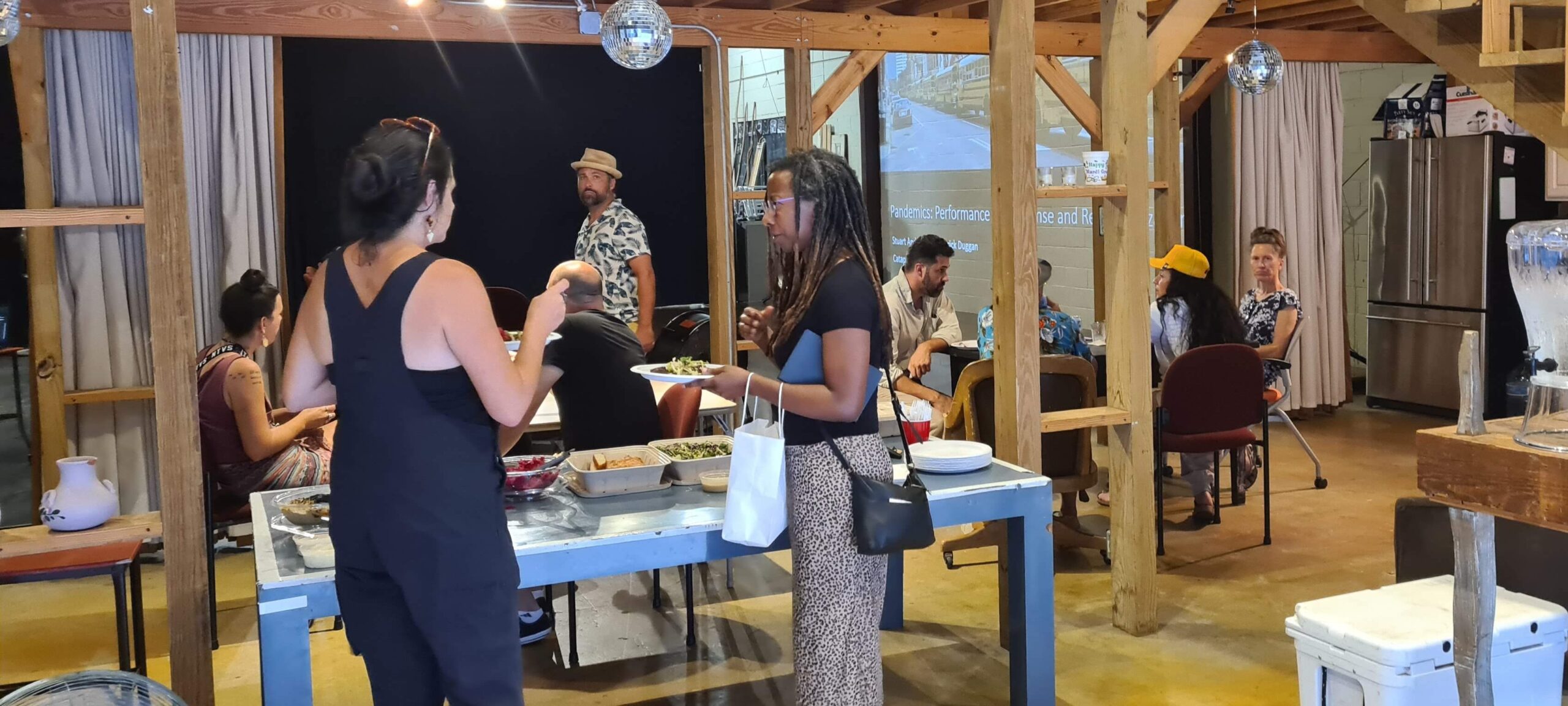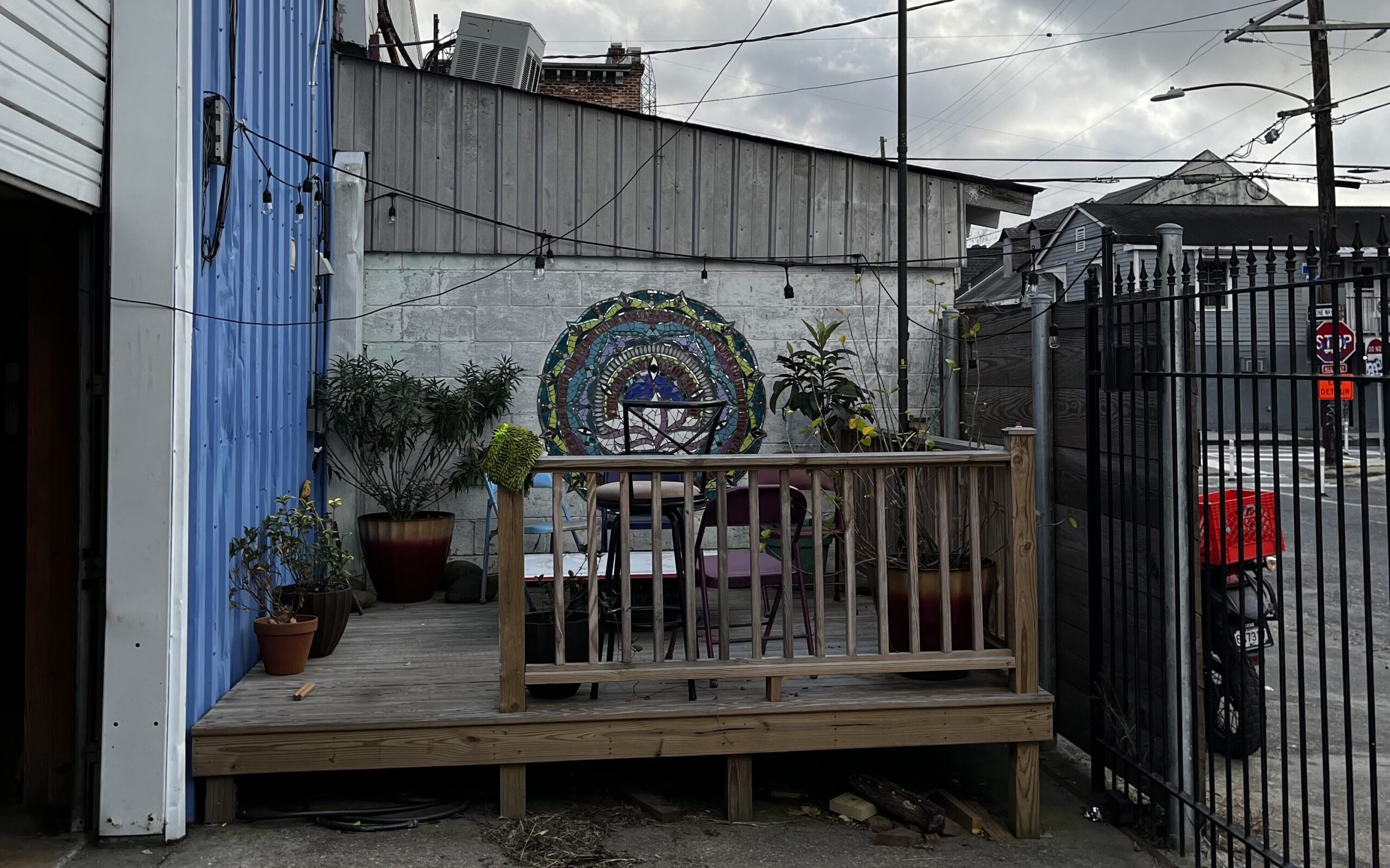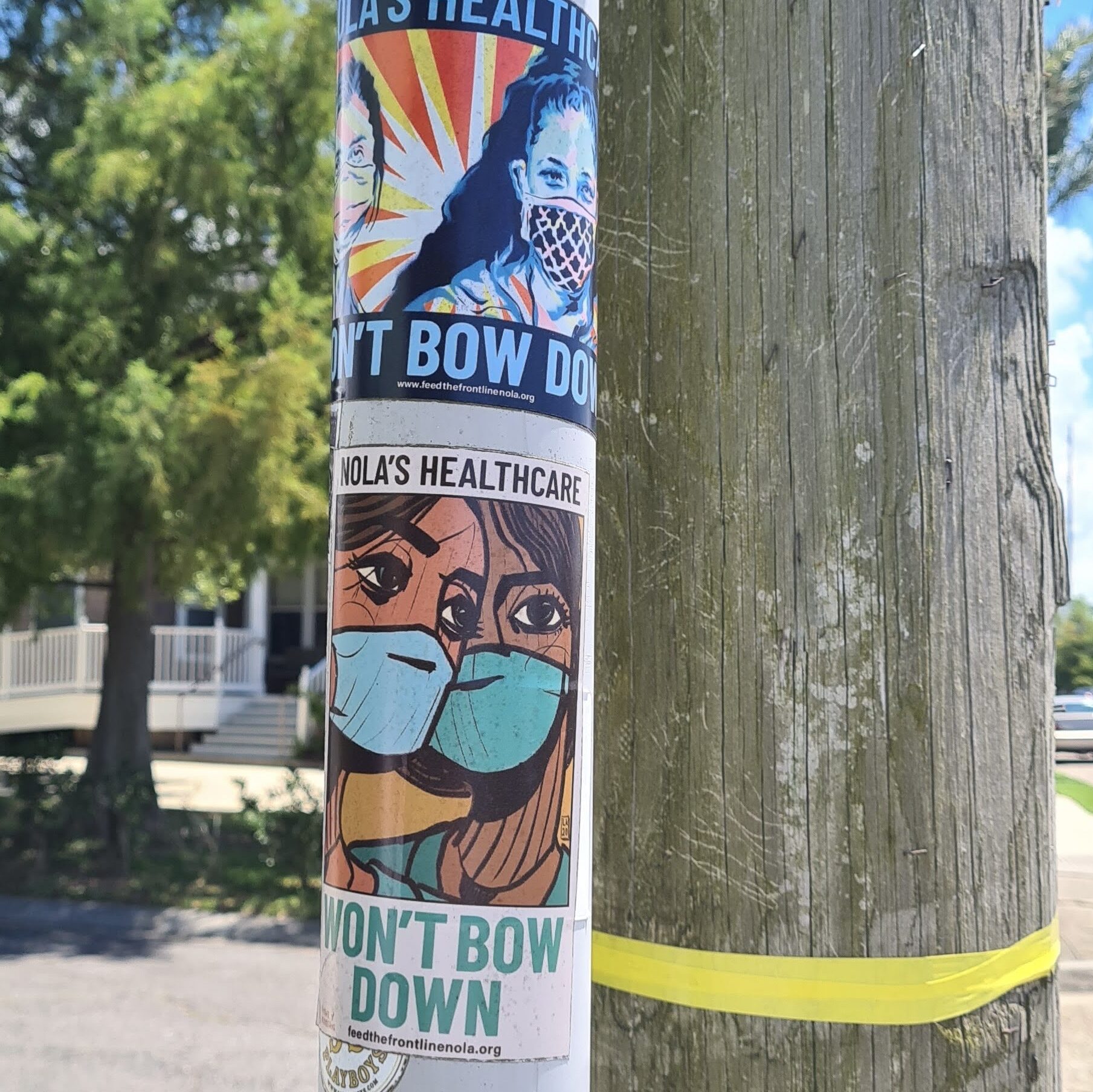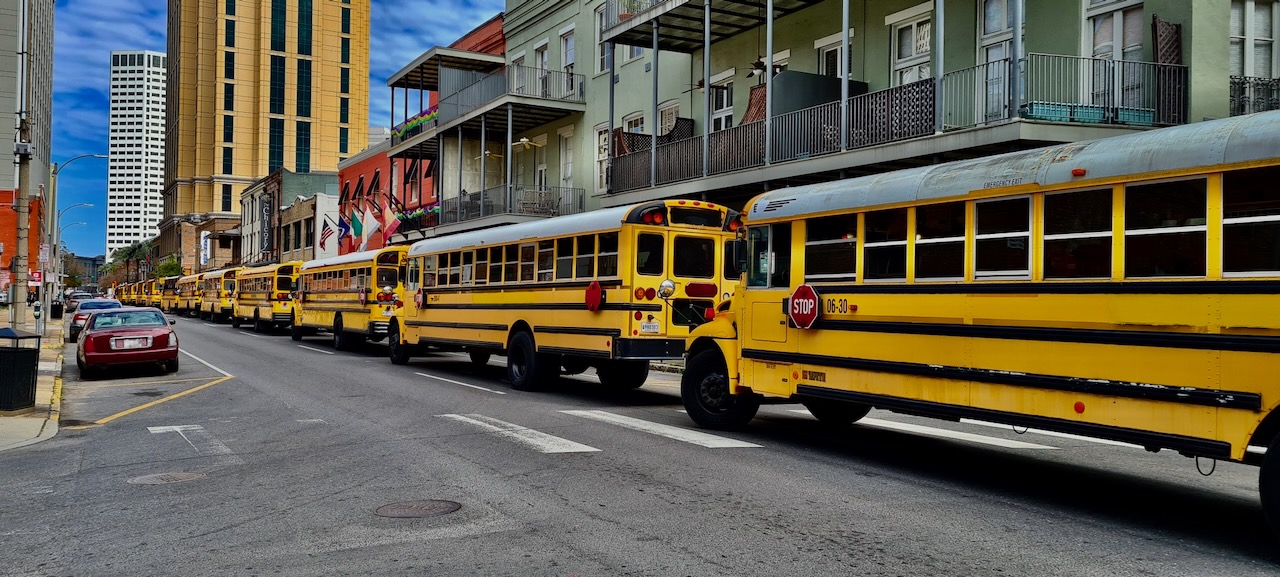“Who folks do trust and hold in esteem and look up to for social guidance are the artists and culture bearers—the people in the community who make music, who make Indian suits, who are chefs and culinary artists or poets, spoken word artists, singers.” (Asali DeVan Ecclesiastes, our emphasis)
On the evening of Tuesday 6th June, we strolled from our apartment in the Warehouse District to Catapult, a multi-arts and incubation space on St Ferdinand Street, where the Marigny meets the Bywater. A warm, sunny evening with the threat of rain seemingly passed, we were pleased to be walking. Our two-mile route paralleled the curve of the Mississippi and skimmed the edge of the French Quarter, and while we passed businesses and bars, we only caught glimpses of the river’s edge; the city seemed quiet, the streets fairly empty. This was reflected back to us the next day as ‘the great exodus’ having begun – some folks annually vacate the city in the summer to avoid the most intense heats.

Despite the quietness of the streets, a crowd of 20–25 arts and indigenous cultural leaders, organisers, and cultural advocates have gathered at the venue for our event: ‘Pandemics: Performance as Response and Refamiliarization’. The event began casually, through the breaking of bread and sharing some wonderful food from a caterer called 1000 Figs. As people make up their plates, wise words from the then Director of the CAC Neil Barclay shared with us on the first day of our first trip in 2018 come back to us: that food is essential when gathering people together in New Orleans.
The Covid-19 pandemic hit New Orleans hard, the consequences and aftereffects of it are still being processed: despite the pandemic being declared ‘over’ by the WHO, it is of course still a lived reality for many in this city (and globally). It is not over in anything but a technical sense, a sentiment that reverberates in the room as we share our research.
In this event, we offered reflections on ways that arts and culture matter in the unfolding emergency of a pandemic. Not least in this, is the way that arts and cultural leaders are very often trusted voices in many communities, especially in New Orleans (as the Eccelsiastes citation above reflects). More broadly, while the pandemic had global impact and changed arts and everyday practices, arts practitioners and organizations turned to face the pandemic in dynamic and meaningful ways with incredible speed.

At the same time, emergency planners globally turned to the Disaster Risks Management Cycle in conceiving their responses to the crisis. But, we suggest, the neatness of the ‘Mitigation – Preparedness – Response – Recovery’ cycle fails to account for the complexity of lived experience in a given place, at least conceptually. This is particularly the case in an ‘extended’ crisis that unfolds over some years.
In the talk at Catapult, we reflected on the ways that the pandemic is not a swift nor neat event that can be easily compartmentalized; ‘response’ and ‘recovery’ in particular are messy categorizations, to say nothing of how we might recognize when we move from one to the other. As such, we need new ways of thinking and new forms of practice in the face of events like pandemics: performance might offer new insights towards this.
Offering reflections on multiple performances that happened in the city responding to the pandemic, we argued that performance and cultural practice offered means of ‘rethinking’ the pandemic (and thus practices of emergency management) and afforded opportunities to think in new categorizations that might be seen to sit across and between those of the DRMC. We reflected on the usefulness of practices that point to the usefulness of Remembering & Reminding, Refamiliarizing & Rethinking.

As organizations and individuals ‘flexed’ with the unfolding of the pandemic, so they offered innovative means of understanding how to live productively within that context. Goat in the Road’s Scavenger Hunt offered means to test what it was to be back on the streets after so long, to refamiliarize the street performance practices so central to life here. The city’s #SleevesUpNOLA vaccination campaign deployed the cultural vernacular of the city to encourage vaccination uptake in terms familiar to local residents. Remembering the city’s cultural performance practices and reminding folk how they might once again be part of daily life. Ashe Cultural Art’s Centre’s multi-form response to the pandemic through public health work, redistribution of food and finances, cultural organizing and performances of place and identity in things like I Deserve It! offered multiple perspectives on the crisis that enabled a rethinking of how people might attend to the complex context at play. In so doing, Ashe, we argued, offered a site-specific performance of place that echoed Arielle Julia Brown’s call for ‘Black site-specific performance artists must think about how to mobilize community, build through creative coalitions, and reaffirm our histories and rights in public spaces’ (2017, 238-239).
All these works offer nuance and a messier understanding of how a crisis unfolds and is managed. It was a privilege to share our research at Catapult, and to converse with a brilliant group of generously critical colleagues from across a range of disciplines, practices, perspectives and communities in the city. In particular we are deeply grateful for reflections on critical issues in the city, and prompts to think further about:
- Means of documenting cultural responses to the pandemic to network ideas together. How might this reveal the power of cultural networks and map the importance of transdisciplinary practices and thinking?
- How might we problematise ‘recovery’ as ‘an essential good’, how might we move from recovery to positive, equitable and genuine transformation?
- Where is the social justice in systems of emergency planning and resilience?
- How do we account for grief and trauma in contexts of response and recovery?
- In what ways can we account for and celebrate indigenous practices of medicine making and herbalism in contexts of pandemic response? How might we expand understandings of performance in doing this?
- In the context of the infinite complexity of the cultural economy of New Orleans, how can we think productively about ‘recovery’ and problematise the neoliberal logics of resiliency in so doing?
Next up: RiverFest, 10th June, 12 – 1pm: ‘At the River’s Edge: Performing Water in New Orleans’
